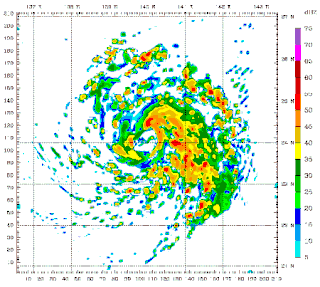Related Research Articles

Backward compatibility is a property of an operating system, software, real-world product, or technology that allows for interoperability with an older legacy system, or with input designed for such a system, especially in telecommunications and computing.
Delphi is a general-purpose programming language and a software product that uses the Delphi dialect of the Object Pascal programming language and provides an integrated development environment (IDE) for rapid application development of desktop, mobile, web, and console software, currently developed and maintained by Embarcadero Technologies.
Desert Research Institute (DRI) is the nonprofit research campus of the Nevada System of Higher Education (NSHE) and sister property of the University of Nevada, Reno (UNR), the organization that oversees all publicly supported higher education in the U.S. state of Nevada. At DRI, approximately 500 research faculty and support staff engage in more than $50 million in environmental research each year. DRI's environmental research programs are divided into three core divisions and two interdisciplinary centers. Established in 1988 and sponsored by AT&T, the institute's Nevada Medal awards "outstanding achievement in science and engineering".

The Air Resources Laboratory (ARL) is an air quality and climate laboratory in the Office of Oceanic and Atmospheric Research (OAR) which is an operating unit within the National Oceanic and Atmospheric Administration (NOAA) in the United States. It is one of seven NOAA Research Laboratories (RLs). In October 2005, the Surface Radiation Research Branch of the ARL was merged with five other NOAA labs to form the Earth System Research Laboratory.

TurboGears is a Python web application framework consisting of several WSGI components such as WebOb, SQLAlchemy, Kajiki template language and Repoze.
CLaMS is a modular chemistry transport model (CTM) system developed at Forschungszentrum Jülich, Germany. CLaMS was first described by McKenna et al. (2000a,b) and was expanded into three dimensions by Konopka et al. (2004). CLaMS has been employed in recent European field campaigns THESEO, EUPLEX, TROCCINOX SCOUT-O3, and RECONCILE with a focus on simulating ozone depletion and water vapour transport.

In atmospheric science, an atmospheric model is a mathematical model constructed around the full set of primitive, dynamical equations which govern atmospheric motions. It can supplement these equations with parameterizations for turbulent diffusion, radiation, moist processes, heat exchange, soil, vegetation, surface water, the kinematic effects of terrain, and convection. Most atmospheric models are numerical, i.e. they discretize equations of motion. They can predict microscale phenomena such as tornadoes and boundary layer eddies, sub-microscale turbulent flow over buildings, as well as synoptic and global flows. The horizontal domain of a model is either global, covering the entire Earth, or regional (limited-area), covering only part of the Earth. The different types of models run are thermotropic, barotropic, hydrostatic, and nonhydrostatic. Some of the model types make assumptions about the atmosphere which lengthens the time steps used and increases computational speed.
The National Atmospheric Release Advisory Center (NARAC) is located at the University of California's Lawrence Livermore National Laboratory. It is a national support and resource center for planning, real-time assessment, emergency response, and detailed studies of incidents involving a wide variety of hazards, including nuclear, radiological, chemical, biological, and natural emissions.
PUFF-PLUME is a model used to help predict how air pollution disperses in the atmosphere. It is a Gaussian atmospheric transport chemical/radionuclide dispersion model that includes wet and dry deposition, real-time input of meteorological observations and forecasts, dose estimates from inhalation and gamma shine, and puff or continuous plume dispersion modes. It was first developed by the Pacific Northwest National Laboratory (PNNL) in the 1970s.
NAME atmospheric pollution dispersion model was first developed by the UK's Met Office in 1986 after the nuclear accident at Chernobyl, which demonstrated the need for a method that could predict the spread and deposition of radioactive gases or material released into the atmosphere.

The Weather Research and Forecasting (WRF) Model is a numerical weather prediction (NWP) system designed to serve both atmospheric research and operational forecasting needs. NWP refers to the simulation and prediction of the atmosphere with a computer model, and WRF is a set of software for this. WRF features two dynamical (computational) cores, a data assimilation system, and a software architecture allowing for parallel computation and system extensibility. The model serves a wide range of meteorological applications across scales ranging from meters to thousands of kilometers.
The following outline is provided as an overview of and topical guide to air pollution dispersion: In environmental science, air pollution dispersion is the distribution of air pollution into the atmosphere. Air pollution is the introduction of particulates, biological molecules, or other harmful materials into Earth's atmosphere, causing disease, death to humans, damage to other living organisms such as food crops, and the natural or built environment. Air pollution may come from anthropogenic or natural sources. Dispersion refers to what happens to the pollution during and after its introduction; understanding this may help in identifying and controlling it.
ISC3 (Industrial Source Complex) model is a popular steady-state Gaussian plume model which can be used to assess pollutant concentrations from a wide variety of sources associated with an industrial complex.
RIMPUFF is a local-scale puff diffusion model developed by Risø DTU National Laboratory for Sustainable Energy, Denmark. It is an emergency response model to help emergency management organisations deal with chemical, biological and radiological releases to the atmosphere.
SAFE AIR is an advanced atmospheric pollution dispersion model for calculating concentrations of atmospheric pollutants emitted both continuously or intermittently from point, line, volume and area sources. It adopts an integrated Gaussian puff modeling system. SAFE AIR consists of three main parts: the meteorological pre-processor WINDS to calculate wind fields, the meteorological pre-processor ABLE to calculate atmospheric parameters and a lagrangian multisource model named P6 to calculate pollutant dispersion. SAFE AIR is included in the online Model Documentation System (MDS) of the European Environment Agency (EEA) and of the Italian Agency for the Protection of the Environment (APAT).
A chemical transport model (CTM) is a type of computer numerical model which typically simulates atmospheric chemistry and may give air pollution forecasting.
The Semi-Lagrangian scheme (SLS) is a numerical method that is widely used in numerical weather prediction models for the integration of the equations governing atmospheric motion. A Lagrangian description of a system focuses on following individual air parcels along their trajectories as opposed to the Eulerian description, which considers the rate of change of system variables fixed at a particular point in space. A semi-Lagrangian scheme uses Eulerian framework but the discrete equations come from the Lagrangian perspective.
The Hybrid Single-Particle Lagrangian Integrated Trajectory model (HYSPLIT) is a computer model that is used to compute air parcel trajectories to determine how far and in what direction a parcel of air, and subsequently air pollutants, will travel. HYSPLIT is also capable of calculating air pollutant dispersion, chemical transformation, and deposition. The HYSPLIT model was developed by the National Oceanic and Atmospheric Administration (NOAA) Air Resources Laboratory and the Australian Bureau of Meteorology Research Centere in 1998. The model derives its name from the usage of both Lagrangian and Eulerian approaches.
Lagrangian ocean analysis is a way of analysing ocean dynamics by computing the trajectories of virtual fluid particles, following the Lagrangian perspective of fluid flow, from a specified velocity field. Often, the Eulerian velocity field used as an input for Lagrangian ocean analysis has been computed using an ocean general circulation model (OGCM). Lagrangian techniques can be employed on a range of scales, from modelling the dispersal of biological matter within the Great Barrier Reef to global scales. Lagrangian ocean analysis has numerous applications, from modelling the diffusion of tracers, through the dispersal of aircraft debris and plastics, to determining the biological connectivity of ocean regions.
References
- ↑ The Lagrangian particle dispersion model FLEXPART version 8.2 Retrieved 24 Mar 2015
- ↑ A Lagrangian particle dispersion model compatible with WRF (pdf) Retrieved 24 Mar 2015
- ↑ Development of a Lagrangian Particle Dispersion Model Compatible with the Weather, Research and Forecasting (WRF) Model-Phase 2, Oct 2006 by Jerome D. Fast and Richard C. Easter, Pacific Northwest National Laboratory
- ↑ Development of a Lagrangian Particle Dispersion Model Compatible with the Weather Research and Forecasting (WRF) Model – Phase 3, Jan 2007 by Jerome D. Fast and Richard C. Easter, Pacific Northwest National Laboratory
- ↑ The Lagrangian particle dispersion model FLEXPART-WRF version 3.1